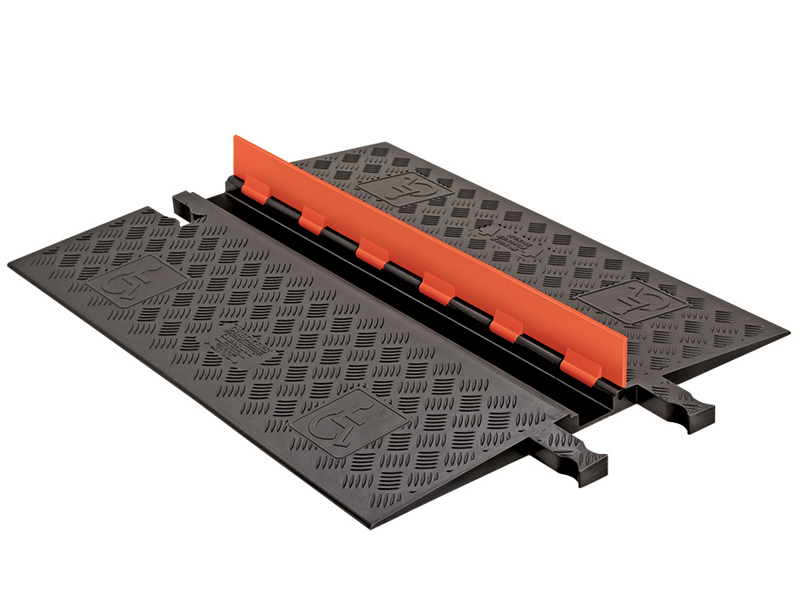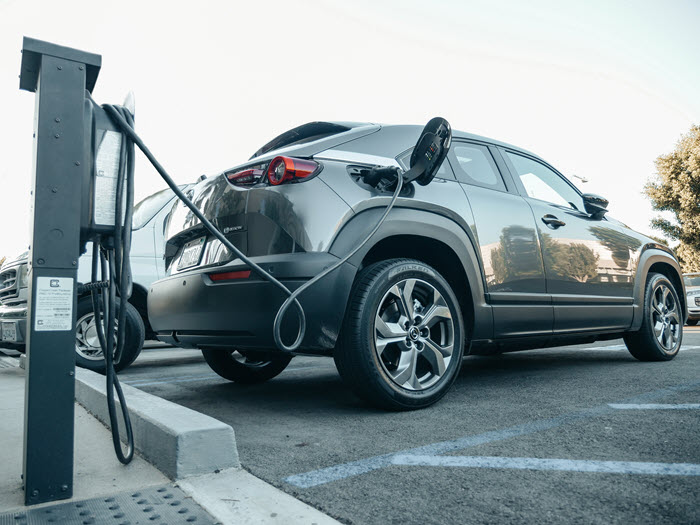It depends. Vehicle charging stations, charging cables and similar obstructions are NOT permitted in the public right-of-way (those associated with VDOT or County-maintained roadways). However, crossing sidewalks within privately owned sites and along privately maintained roadways, such as townhouse developments, are at the discretion of the owner or homeowner’s association (HOA). Nonetheless, a design professional, attorney or other expert shall advise to determine the best practice for maintaining the sidewalks in a safe usable manner.
If the owner or HOA does allow cables to cross a private sidewalk, the use of commercially available cord ramps designed to comply with the requirements of the 2010 ADA Standards for Accessible Design, published by the U.S. Department of Justice, may be an appropriate choice (example pictured below). Level 2 charging cords generally exceed the capacity of a readily-available ramp and require customized designs to meet ADA standards. If a permanent trough with removable grate is used, the sidewalk must remain uninterrupted across the trough, and the trough must provide positive drainage to the curb. Whichever crossing is employed, the length of the charging cord from the station to the automobile’s receptacle should not exceed 15-feet, consistent with National Electric Code requirements.
 Additional information about accessible sidewalk and road interactions is available in the Public Right-of-Way Accessibility Guidelines, published by the U.S. Access Board.
Additional information about accessible sidewalk and road interactions is available in the Public Right-of-Way Accessibility Guidelines, published by the U.S. Access Board.
For any associated permit request that suggests that temporary cords will cross a private sidewalk the applicant must detail this crossing (ramps, etc.) and approval by the affiliated property owner association. Information regarding permits associated with EV Charging Stations can be found at: Electric Vehicle Charging Stations (EVCS) Permits | Land Development Services



 Additional information about accessible sidewalk and road interactions is available in the
Additional information about accessible sidewalk and road interactions is available in the 